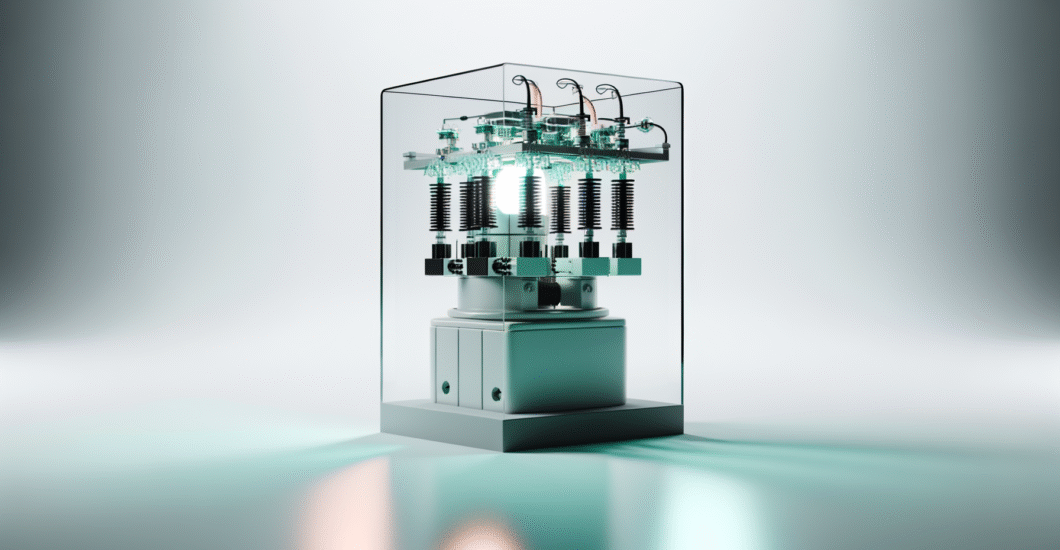Power Play: Can the Grid Cope with AI’s Growing Appetite?
Estimated reading time: 7 minutes
Key takeaways:
- AI data centers could consume nearly 9% of total U.S. electricity by 2030.
- Individual hyperscale AI data centers demand up to 1 gigawatt of power, akin to a nuclear power station.
- The current surge in AI energy demand is pushing utilities to rely more on fossil fuels.
- Innovative solutions, including energy-efficient AI metrics and renewable integrations, are vital for sustainable growth.
- Stakeholders must collaboration to balance AI growth with environmental responsibilities.
The Shocking Scale of AI’s Power Play
The numbers behind AI’s energy appetite are staggering, and they’re growing at a pace that would make a cryptocurrency miner blush. We’re not talking about a gradual uptick in demand—this is an exponential explosion that’s catching utilities, regulators, and even tech companies off guard.
Global electricity demand from data centers is rocketing from approximately 1% in 2022 to over 3% by 2030. In the United States specifically, data center electricity use could exceed 600 TWh annually by 2030, effectively tripling today’s usage. To put that in perspective, meeting this demand will require grid expansions equivalent to building 14 new large power plants.
But here’s where it gets really wild: individual hyperscale AI data centers are now demanding between 100-500 megawatts of power, with some mega-campuses approaching or surpassing 1 gigawatt. That’s comparable to the output of an entire nuclear power station or the electricity consumption of a small state. We’re essentially building digital cities that consume as much power as actual cities.
The
World Economic Forum points out that this surge represents a fundamental shift in how we think about electricity demand. Unlike traditional power consumption that grows predictably with population and economic activity, AI demand is concentrated, unpredictable, and astronomically large.
Grid Reality Check: The Infrastructure Can’t Keep Up
So, can the grid cope with AI’s growing appetite for power? The honest answer is: not without some serious growing pains and tough trade-offs that nobody really wants to talk about.
The surge in demand from AI data centers is outpacing our grid’s ability to adapt and expand. This isn’t just about building more power plants—though we’ll need plenty of those. It’s about fundamentally reimagining how our electrical infrastructure operates under completely new stress patterns.
Utilities across the country are making decisions that would have seemed unthinkable just a few years ago. They’re delaying the retirement of coal plants, expanding natural gas infrastructure, and reducing investments in renewable energy projects—all to meet the immediate, overwhelming demand from AI operations. Regions like Utah, Georgia, and Wisconsin are approving new fossil fuel investments specifically to power data center growth.
This creates a troubling paradox. The same technology companies publicly championing sustainability and net-zero commitments are simultaneously driving a resurgence in fossil fuel dependency. The irony is almost poetic—AI systems designed to solve complex problems are creating one of the most complex energy challenges we’ve ever faced.
The infrastructure stress goes beyond just generating enough electricity.
Carbon Credits research reveals that AI data centers are literally distorting local power supplies, creating what engineers call “harmonics” and waveform disturbances. These distortions can cause home appliances to overheat, damage electronics, and create grid stability risks that ripple through entire regional networks.
Unlike traditional electricity demand that follows predictable patterns—people use more power during hot summer afternoons and less overnight—AI data centers operate with different rhythms entirely. Their concentrated, variable demand creates new reliability risks that grid operators are still learning to manage.
The Economic and Environmental Double Bind
Higher demand inevitably leads to increased electricity costs for everyone, not just tech companies feeding their AI models. When data centers consume massive amounts of power in concentrated areas, they strain regional supplies and drive up prices for residential and commercial customers who have no choice but to pay more.
Here’s the environmental kicker: despite all the talk about green AI and sustainable technology, the current expansion is actively driving utilities toward fossil fuels. When faced with immediate, massive demand spikes, utilities default to what’s immediately available—often natural gas plants that can be brought online quickly, or they extend the life of coal plants scheduled for retirement.
This isn’t just disappointing; it’s potentially catastrophic for decarbonization efforts. Every month we delay transitioning to clean energy makes future climate goals exponentially more difficult and expensive to achieve. We’re essentially mortgaging our environmental future to power today’s AI boom.
Finding Solutions in the Chaos
Despite the daunting challenges, there are genuine reasons for optimism—if we’re smart about how we approach this crisis. The same innovative thinking that created AI can solve its energy problems, but it requires coordinated effort across technology, policy, and infrastructure development.
The most promising developments are happening at the intersection of efficiency and intelligence. Researchers are developing AI-specific efficiency metrics like “energy per AI task” and “grid-aware computing” that could fundamentally change how we measure and optimize data center energy use. Instead of just building bigger, more powerful systems, these approaches focus on getting better results with less energy.
Hardware innovation is accelerating rapidly. New chip architectures specifically designed for AI workloads can deliver dramatically better performance per watt. Advanced cooling systems, some powered by AI themselves, are reducing the energy overhead of keeping massive server farms operational. These aren’t incremental improvements—they’re order-of-magnitude efficiency gains that could change the entire calculus of AI energy consumption.
Perhaps most encouragingly, we’re seeing breakthrough software solutions that prove AI doesn’t have to be an energy monster. The emergence of highly efficient AI models like DeepSeek demonstrates that software and system-level optimization can dramatically lower energy requirements without sacrificing performance. These developments suggest that much of AI’s current energy appetite comes from inefficient implementations rather than fundamental physical limits.
The Clean Energy Race
While some utilities are leaning heavily on fossil fuels to meet immediate demand, others are racing to integrate renewables fast enough to keep pace with AI growth. Solar and wind power costs have plummeted to the point where they’re often the cheapest electricity sources available, but deployment and grid integration still lag behind demand.
Advanced grid technologies like smart inverters, battery storage, and demand response systems could help balance AI’s massive but variable power needs with intermittent renewable energy sources. The challenge isn’t technological—we know how to build these systems. The challenge is doing it fast enough and at sufficient scale.
Some forward-thinking data center operators are pioneering direct renewable energy procurement, building solar and wind farms specifically to power their AI operations. This approach bypasses some grid limitations while accelerating clean energy deployment, though it requires massive upfront investment and long-term planning.
Practical Strategies for Navigating the Energy Transition
For organizations deploying AI systems, several actionable strategies can help reduce energy impact while maintaining competitive advantage. Start by auditing current AI workloads to identify inefficiencies—many organizations run AI models far more frequently or at higher resource levels than necessary.
Implement intelligent scheduling systems that can shift non-critical AI processing to times when renewable energy is abundant and grid demand is low. This approach, sometimes called “carbon-aware computing,” can significantly reduce both energy costs and environmental impact without requiring major infrastructure changes.
Consider the total cost of ownership when evaluating AI solutions, including energy consumption across the entire lifecycle. More efficient models may have higher upfront development costs but deliver superior long-term economics when energy expenses are factored in.
Partner with cloud providers and data center operators who are genuinely committed to renewable energy integration. Look beyond marketing claims to examine actual energy procurement contracts and grid impact assessments.
The Crossroads Ahead
We’re standing at a critical juncture where the decisions made in the next few years will shape both the future of AI development and global energy systems for decades. The stakes couldn’t be higher—balancing AI’s transformative economic benefits with its energy and environmental costs will be a defining challenge for utilities, policymakers, and technology leaders.
The path forward requires unprecedented coordination between traditionally separate industries. Tech companies need to prioritize efficiency and grid compatibility, not just raw performance. Utilities must accelerate renewable deployment while building grid flexibility for new demand patterns. Policymakers need to create frameworks that encourage innovation while preventing environmental backsliding.
Most importantly, we need honest conversations about trade-offs. Every AI application isn’t worth the environmental cost, and every efficiency improvement doesn’t justify unlimited expansion. The companies and organizations that succeed in this new landscape will be those that thoughtfully balance capability with responsibility.
The grid can cope with AI’s growing appetite, but only if we’re strategic, efficient, and committed to sustainable solutions. The alternative—a future of rolling blackouts, skyrocketing energy costs, and environmental regression—is simply unacceptable.
Ready to build AI solutions that work with the grid instead of against it? Connect with our team at
Validium to explore adaptive AI approaches that deliver powerful results while respecting planetary boundaries. The future of intelligent technology depends on making smart energy choices today.


